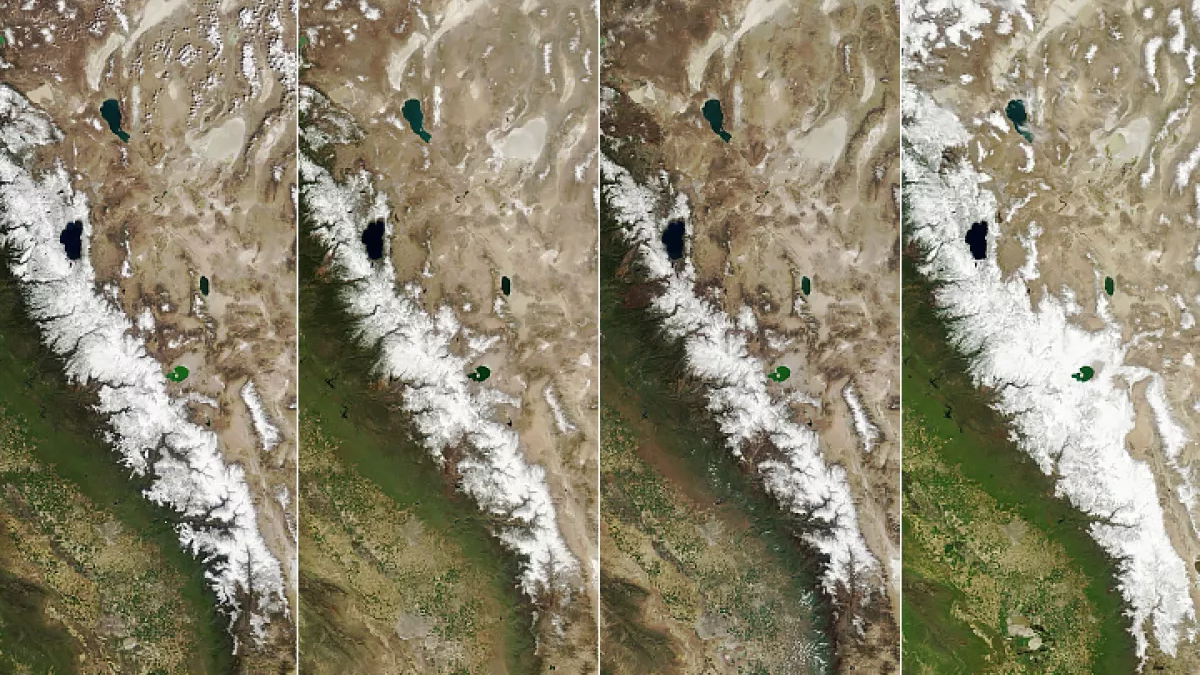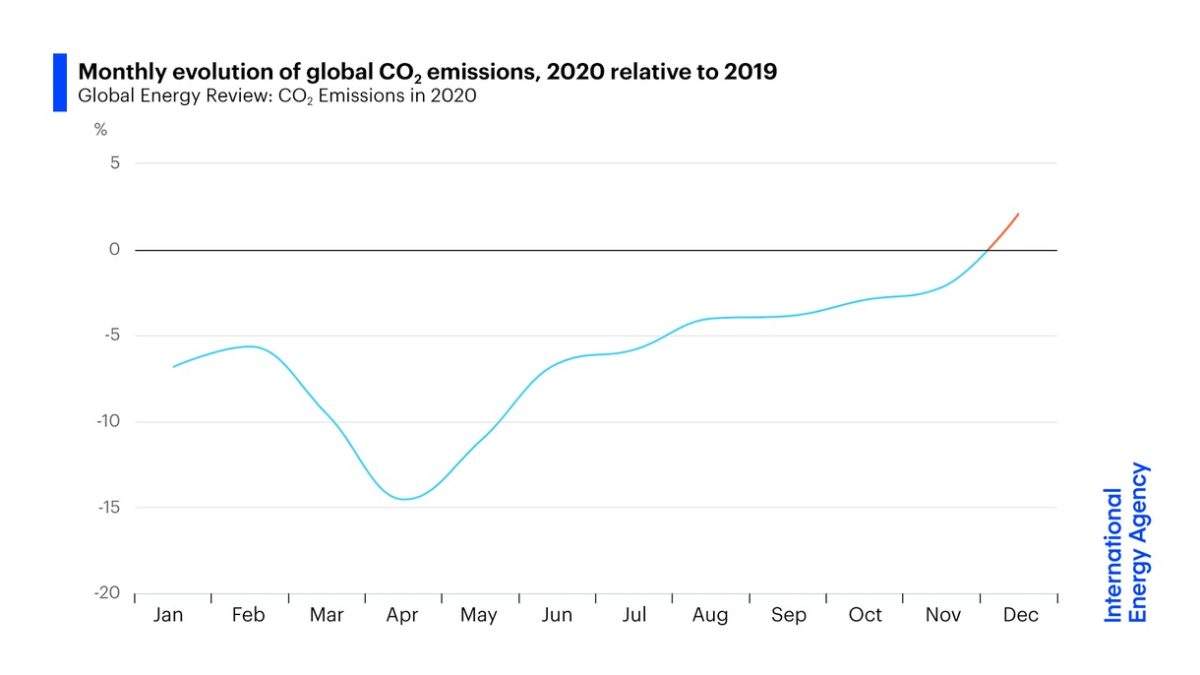By 2050, many cities will have weather like they’ve never seen – “The fate of major tropical cities remains uncertain as many will experience unprecedented climate conditions”
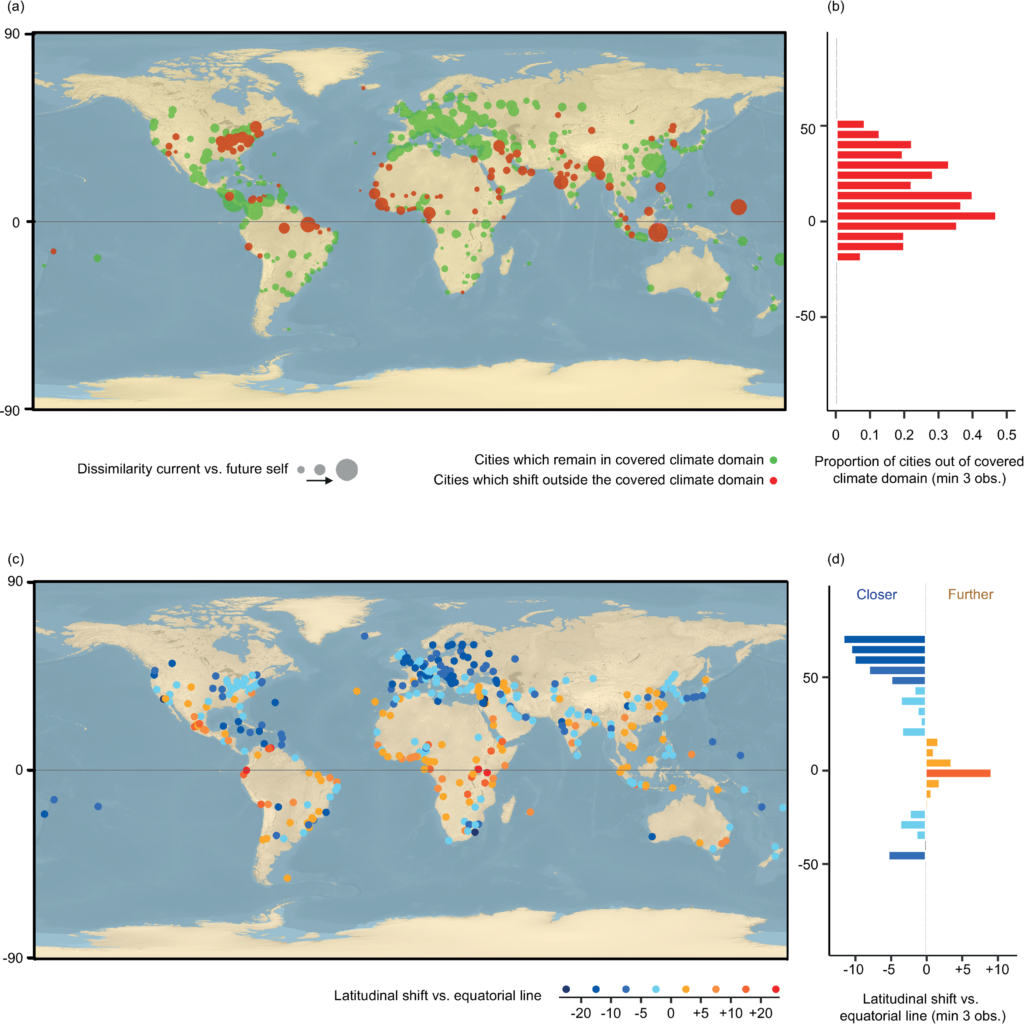
By Stephen Leahy
10 July 2019
(National Geographic) – Climate forecast for 2050: New York City winters will have the weather of today’s Virginia Beach, damp and cold London will be hot and dry like Barcelona, wet Seattle will be like drier San Francisco, and Washington D.C. will be more like today’s Nashville but with even greater variation in temperatures and precipitation. Those predictions are according to the first global analysis of how some cities’ climate conditions will shift under climate change.
“We wanted to know what’s the most conservative estimate of what the climate will be for 520 major cities in 2050,” said Tom Crowther, a researcher at ETH Zürich, and senior author of the study published today in the peer-reviewed science journal PLOS ONE.
“The changes we found are huge,” Crowther says in an interview.
To illustrate their findings the Crowther Lab in Switzerland created a global data map that pairs one city’s future climate conditions with current ones. For example Minneapolis in 2050 will be more like Kansas City, with Minneapolis’s warmest month shooting up from around 80 degrees Fahrenheit on average to more than 90F in 2050.
Generally speaking, cities in the Northern Hemisphere will have the climates cities more than 620 miles to their south have today, he said.
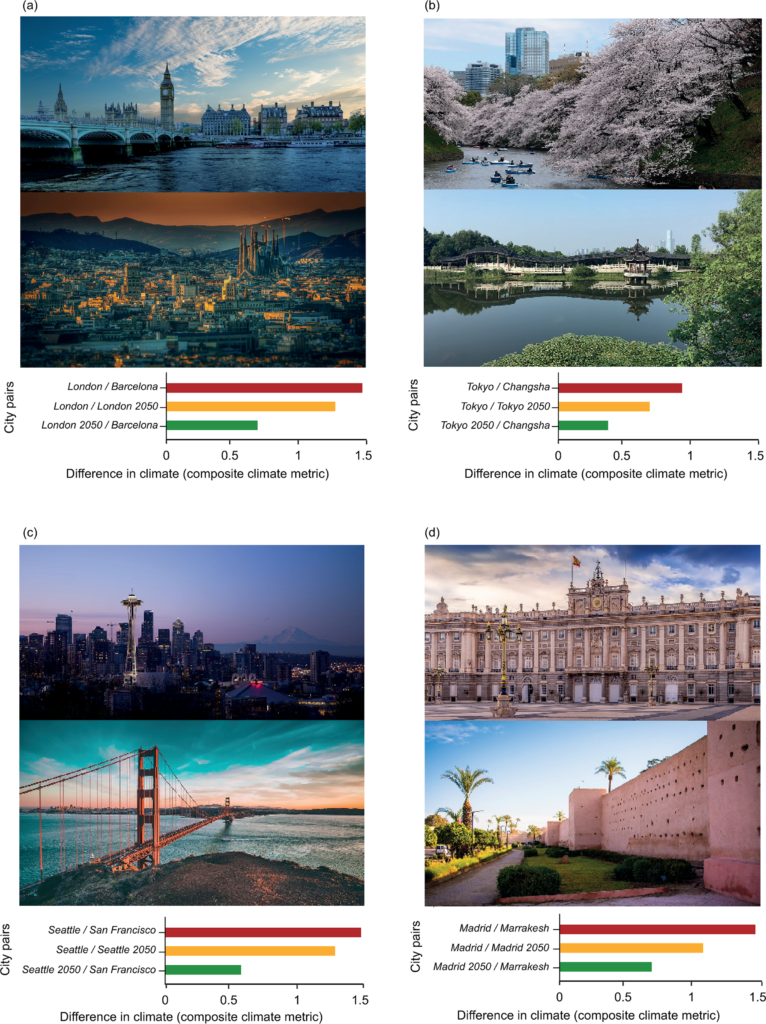
In Europe, summers and winters will get considerably warmer by 2050, with average increases of 3.5°C and 4.7°C, respectively, compared with 2000.
There are no good pairings or analogues for more than 22 percent of the world’s major cities—those with one million or more people currently, researchers found. Those 115 cities, including Washington and 16 other U.S. cities, will have unprecedented climate conditions by 2050 compared to what they saw in 2000, the baseline for the study.
That doesn’t mean that Washington will be hotter than Riyadh, Saudi Arabia, today. It means that there is no current match for the wide climate variations in temperatures, seasonality, and precipitation the city will experience, said Crowther.
The vast majority of the 115 cities that will experience “novel” climates are in the tropics and include metropolises like Kuala Lumpur, Jakarta, Rangoon, and Singapore. Changes in tropical cities will be less in terms of temperature increases, but will be dominated by more frequent extreme precipitation events and the severity and intensity of droughts.
“The fate of major tropical cities remains uncertain as many will experience unprecedented climate conditions,” the study concludes. [more]
By 2050, many U.S. cities will have weather like they’ve never seen
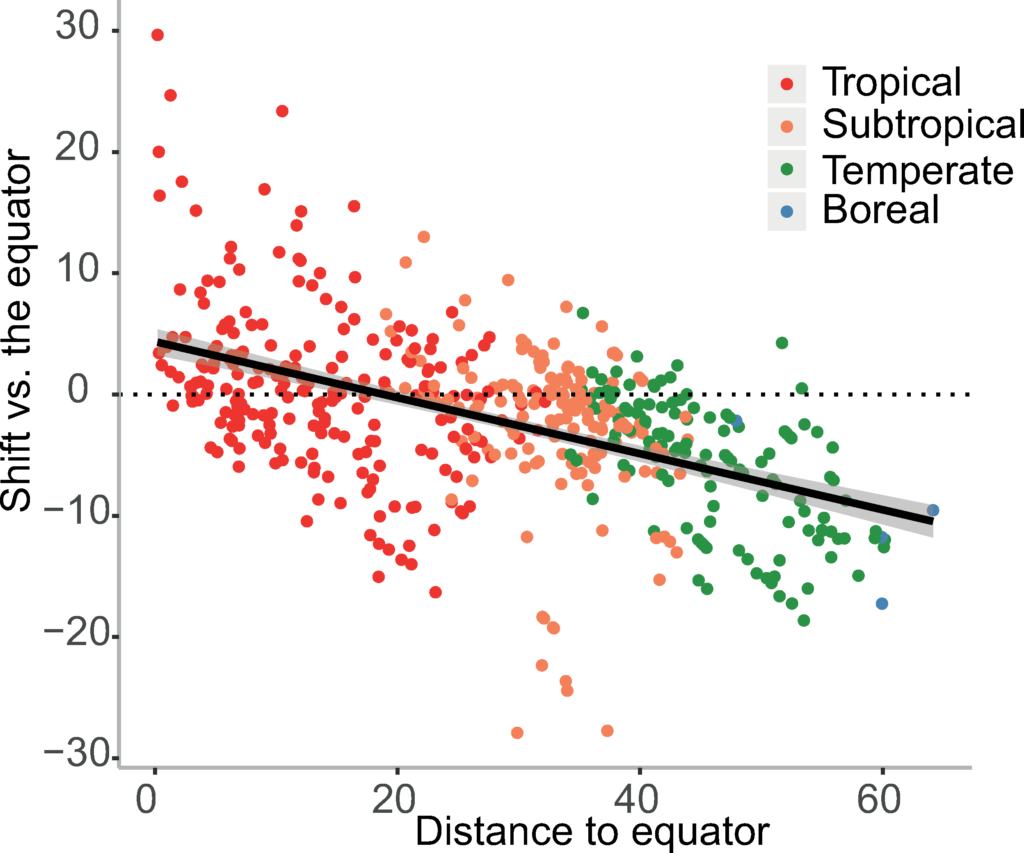
Understanding climate change from a global analysis of city analogues
ABSTRACT: Combating climate change requires unified action across all sectors of society. However, this collective action is precluded by the ‘consensus gap’ between scientific knowledge and public opinion. Here, we test the extent to which the iconic cities around the world are likely to shift in response to climate change. By analyzing city pairs for 520 major cities of the world, we test if their climate in 2050 will resemble more closely to their own current climate conditions or to the current conditions of other cities in different bioclimatic regions. Even under an optimistic climate scenario (RCP 4.5), we found that 77% of future cities are very likely to experience a climate that is closer to that of another existing city than to its own current climate. In addition, 22% of cities will experience climate conditions that are not currently experienced by any existing major cities. As a general trend, we found that all the cities tend to shift towards the sub-tropics, with cities from the Northern hemisphere shifting to warmer conditions, on average ~1000 km south (velocity ~20 km.year-1), and cities from the tropics shifting to drier conditions. We notably predict that Madrid’s climate in 2050 will resemble Marrakech’s climate today, Stockholm will resemble Budapest, London to Barcelona, Moscow to Sofia, Seattle to San Francisco, Tokyo to Changsha. Our approach illustrates how complex climate data can be packaged to provide tangible information. The global assessment of city analogues can facilitate the understanding of climate change at a global level but also help land managers and city planners to visualize the climate futures of their respective cities, which can facilitate effective decision-making in response to on-going climate change.
Understanding climate change from a global analysis of city analogues
